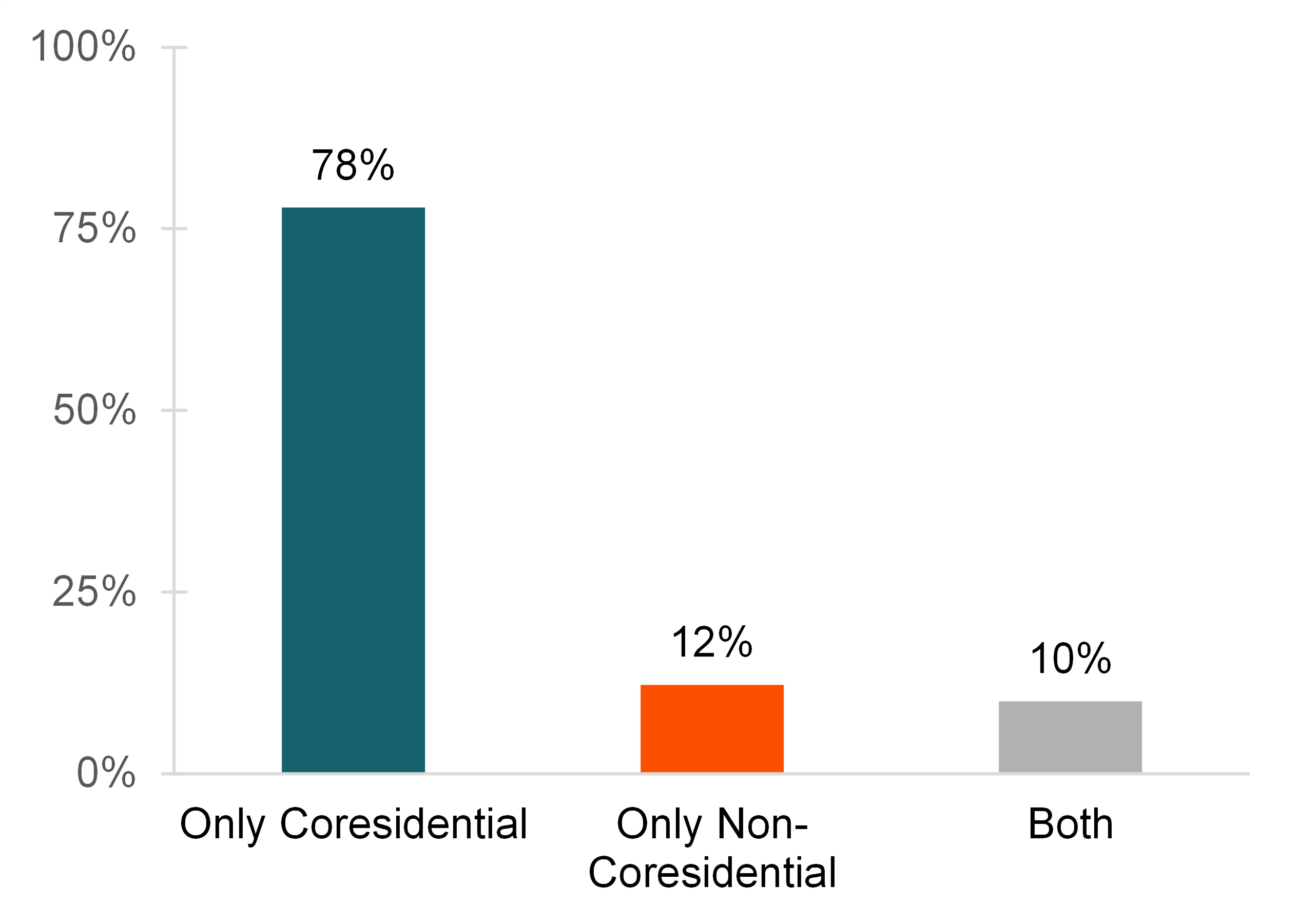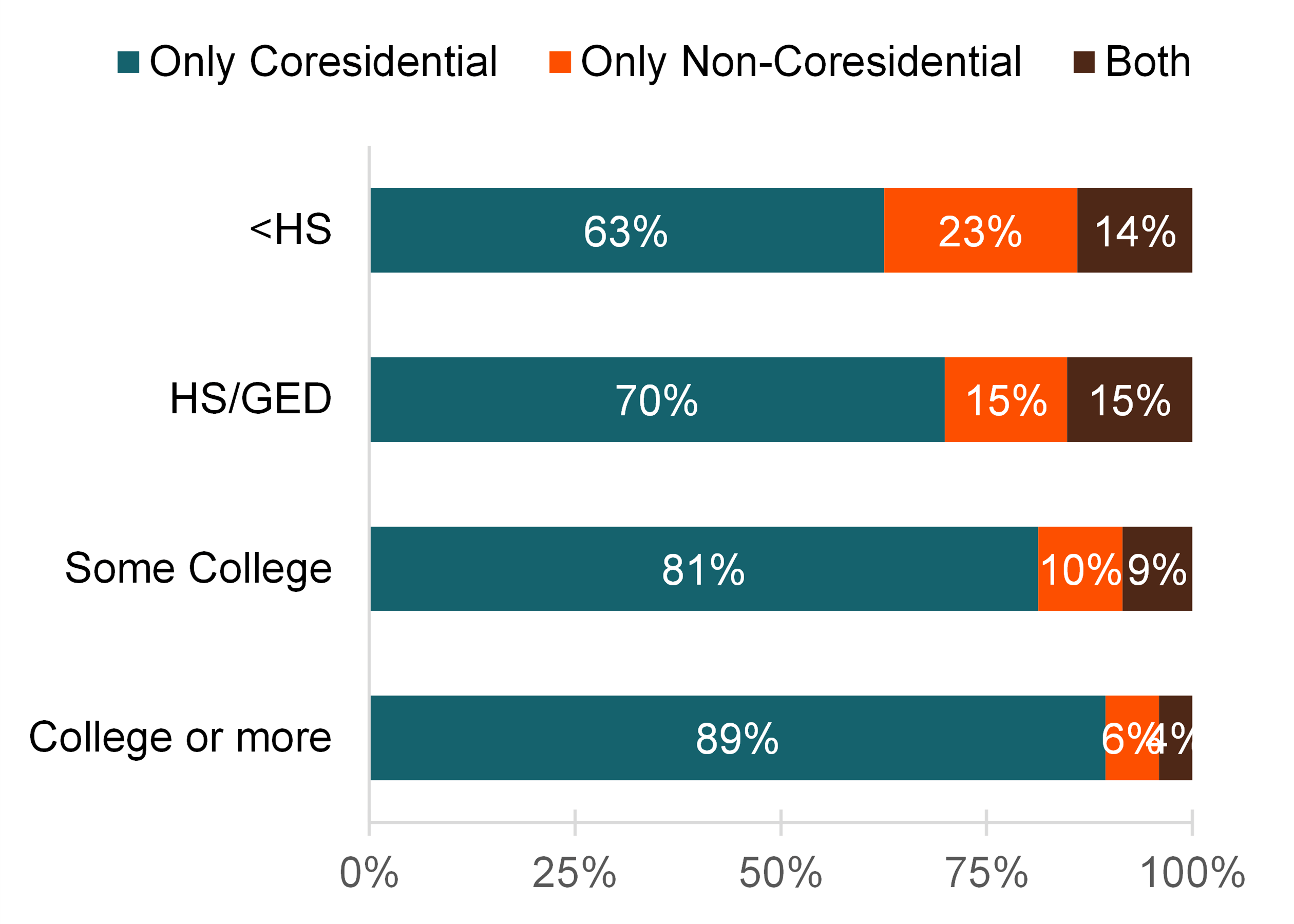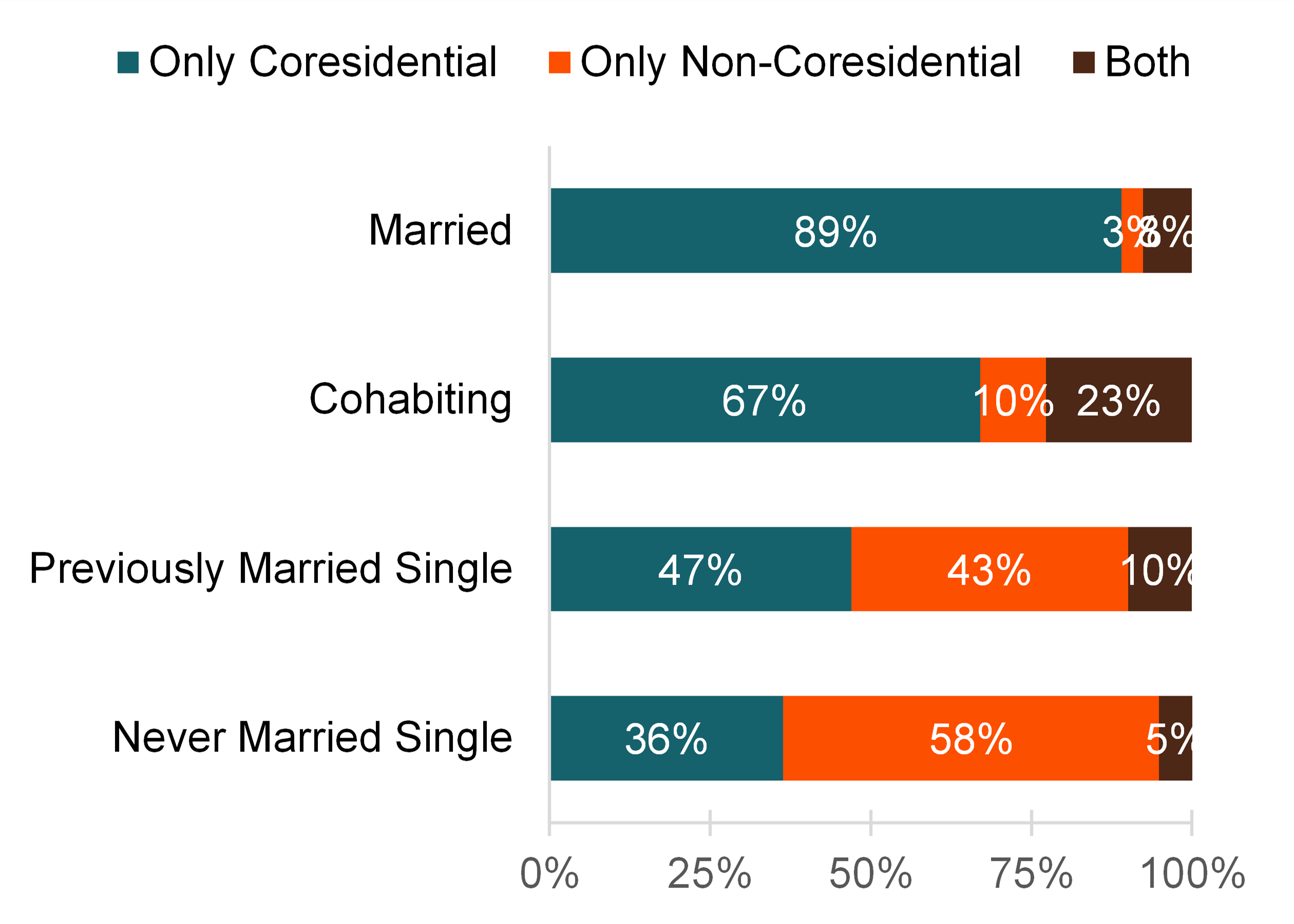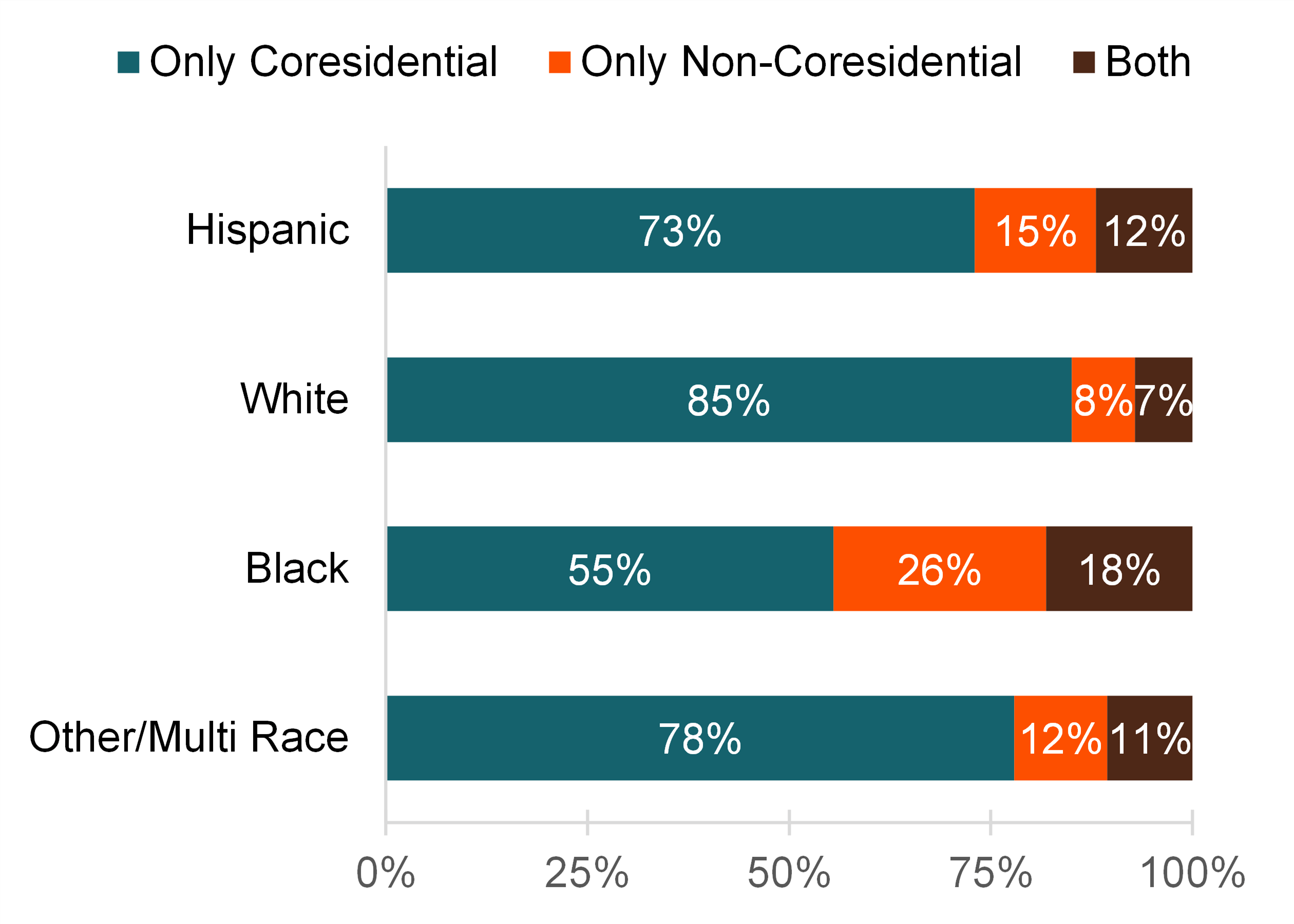Coresidential Fathers with Minor Children 2015-2019
Family Profile No. 22, 2022
Author: Katherine Graham
With the decoupling of fatherhood and marriage (Carlson, 2020) and the growth of stepfamilies (Guzzo, 2021), fathers do not always reside with their biological or adopted children. Previous profiles have explored fathers with resident minor children (Eickmeyer, 2018) and this profile centers on fathers’ parenting experiences by comparing fathers coresiding (part- or full-time) with their children versus those who are not. We distinguish fathers with only coresidential, only non-coresidential, or both coresidential and non-coresidential children. In this Profile when we reference children, we focus on minor (under 18) biological and adopted children. We examine these experiences according to father’s educational attainment, marital status, and race/ ethnicity. Our analyses rely on pooled samples from the 2015-2017 and 2017-2019 cycles of the National Survey of Family Growth because the NSFG is one of the few data sources that asks fathers about both their coresidential and non-coresidential children.
Note:
Analysis only examined the NSFG male respondents who reported having at least one minor biological or adopted child. This profile did not account for either adult children or minor children living in the home who were not the father’s biological or adopted child (stepchildren).
- Among fathers with minor biological or adopted children, over three-fourths (78%) reported only having coresidential children, meaning just over one-in-five fathers were living apart from at least one of their children.
- One-eighth (12%) of fathers had only non-coresidential children indicating they did not live with any of their biological or adopted children under age 18.
- One in ten (10%) fathers had both coresidential and non-coresidential children under the age of 18, signaling these fathers likely had parenting responsibilities spanning two or more households.
Figure 1. Percentage of Fathers who have Only Coresidential Children, Only Non-Coresidential Children, or Both

Education Level
As educational attainment increased, the percentage of fathers with only coresidential children also increased.
- Among fathers with less than a high school education, 63% had only coresidential children, 23% had only non-coresidential children and about 14% had both.
- Fathers with a college degree primarily had only coresidential children (89%). A small percentage, 6%, had only non-coresidential children and 4% had both non- and coresident children.
Figure 2. Fathers' Coresidence by Education Level

Marital Status
Fathers’ coresidence with their children varied according to whether they were married, cohabiting or single as well as their marital history.
- About 9 in 10 married fathers had only coresidential children while only 3% and 8% of married fathers had only non-coresidential and both non- and coresidential children, respectively.
- Among cohabiting fathers, about two thirds had only coresidential children, slightly less than a quarter had both non- and coresidential children. Only 1 in 10 cohabiting fathers had only non-coresidential children.
- About half (47%) of single fathers who had been previously married lived with all their children and 43% lived apart from all their children. Only 1 in 10 of previously married single fathers had both non- and coresidential children.
- A majority (58%) of never married single fathers had only non-coresidential children. Slightly over two thirds (36%) of never married single fathers had only coresidential children and 5% had both.
Figure 3. Fathers' Coresidence with Children by Marital Status

Race/ Ethnicity
Among fathers of all race/ ethnicities considered here, a majority had only coresidential children.
- Among Hispanic fathers, almost three-fourths had only coresidential children, 15% had only non-coresidential children and 12% had both.
- White fathers had the highest percentage of only coresidential children (85%), and the lowest percentage of non-coresidential (8%) and both (7%).
- A majority (55%) of Black fathers reported having only coresidential children, over a quarter reported having only non-coresidential children and almost a fifth had both non- and coresidential children.
- Over three fourths of fathers of multiple or other races reported having only coresidential children, while 12% and 11% had only non-coresidential or both respectively.
Figure 4. Fathers' Coresidence with Children by Race/ Ethnicity

Data Source:
National Center for Health Statistics (NCHS). National Survey of Family Growth Public-Use Data and Documentation. Hyattsville, MD: CDC National Center for Health Statistics. https://www.cdc.gov/nchs/nsfg/index.htm
References:
Carlson, L. (2020). Fatherhood in the U.S.: The decoupling of marriage and childbearing. Family Profiles, FP-20-14. Bowling Green, OH: National Center for Family & Marriage Research. https://doi.org/10.25035/ncfmr/fp-20-14
Eickmeyer, K. J. (2018). Fathers with Resident Minor Children, 2016. Family Profiles, FP-18-06. Bowling Green, OH: National Center for Family & Marriage Research. https://doi.org/10.25035/ncfmr/fp-18-06
Guzzo, K. B. (2021). Stepfamilies among currently cohabiting and married women under 45, 1988 and 2017. Family Profiles, FP-21-21. Bowling Green, OH: National Center for Family & Marriage Research. https://doi.org/10.25035/ncfmr/fp-21-21
Suggested Citation:
Graham, K. (2022). Coresidential fathers with minor children, 2015-2019. Family Profiles, FP-22-22. Bowling Green, OH: National Center for Family & Marriage Research. https://doi.org/10.25035/ncfmr/fp-22-22
Updated: 11/07/2025 03:33PM


